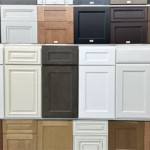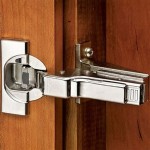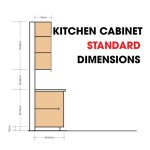How to Remove Old Grease From Cabinets
Over time, kitchen cabinets can accumulate a stubborn layer of grease, making them appear dull and unhygienic. This buildup can be particularly challenging to remove, especially if it has been left unattended for an extended period. However, with the right cleaning solutions and techniques, even the most ingrained grease can be effectively eliminated. This article outlines a comprehensive guide to removing old grease from cabinets, ensuring a sparkling clean and refreshed kitchen space.
Prepare the Cabinets
Before embarking on the cleaning process, it is essential to prepare the cabinets adequately. This involves removing all items from the cabinets, including dishes, utensils, and any decorative accessories. Additionally, clear any loose debris or crumbs that may be present on the shelves and cabinet doors. Ensure the area around the cabinets is clear from obstructions, as this will allow for easier cleaning and prevent accidents.
Choose the Right Cleaning Solution
The choice of cleaning solution will depend on the severity of the grease buildup and the material of the cabinets. For mild grease, a simple solution of warm water and dish soap can be effective. However, for more stubborn grease, stronger cleaning agents are necessary. Consider the following options:
- Baking soda paste: Mix baking soda with water to form a paste and apply it to the greasy surfaces. Let it sit for a few minutes, then scrub with a damp cloth or sponge. Baking soda is a natural abrasive and helps to break down grease.
- Vinegar: White vinegar is a natural degreaser. Spray it directly onto the greasy surfaces and let it sit for a few minutes before wiping clean.
- Commercial degreaser: For heavily soiled cabinets, a commercial degreaser may be required. Choose a product specifically designed for kitchen surfaces, and ensure it is safe for the material of your cabinets. Apply the degreaser according to the manufacturer's instructions.
Regardless of the cleaning solution chosen, it is crucial to test it in an inconspicuous area of the cabinet before applying it to the entire surface. This will help prevent any potential damage or discoloration.
Apply the Cleaning Solution and Scrub
Once the cleaning solution has been selected, apply it to the greasy surfaces of the cabinets using a clean cloth or sponge. Work in small sections and ensure that the entire surface is covered. Let the solution sit for a few minutes to allow it to penetrate the grease.
Use a non-abrasive scrub brush or sponge to gently scrub the greasy surfaces. Apply firm but gentle pressure, avoiding excessive force that could scratch the cabinet finish. For stubborn grease that remains, repeat the application of the cleaning solution and scrubbing process.
Rinse and Dry
After scrubbing, rinse the cabinets thoroughly with clean water to remove all traces of cleaning solution and grease. Use a clean cloth or sponge to wipe down the surfaces and ensure that no residue remains. Dry the cabinets completely with a dry cloth or towel, as moisture can attract dirt and grease.
Additional Tips for Removing Old Grease
For persistent grease stains, consider the following tips:
- Steam cleaning: A steam cleaner can be effective in removing old grease. The hot steam helps to loosen and dissolve grease, making it easier to wipe away.
- Baking soda and vinegar: Create a paste using baking soda and white vinegar. Apply it to the greasy areas and let it sit for a few minutes before scrubbing. This combination is particularly effective for removing burned-on grease.
- Mineral spirits: For heavily soiled cabinets, mineral spirits can be used to remove the toughest grease. However, it is essential to exercise caution when using this solvent, as it can be flammable. Apply it sparingly and ensure adequate ventilation during use.
Protecting Your Cabinets
Once the grease has been effectively removed, it is advisable to protect the cabinets from future grease buildup. Consider:
- Applying a sealant: Applying a sealant to the cabinet surfaces can help to create a barrier that repels grease and makes cleaning easier.
- Regular cleaning: Regularly wipe down the cabinets with a damp cloth or sponge to prevent grease buildup.
- Using a range hood: A range hood helps to capture and vent grease from the air during cooking, reducing its deposition on the cabinets.
By following these tips, you can effectively remove old grease from your kitchen cabinets, restoring their shine and preserving their appearance for years to come.

How To Remove Grease From Kitchen Cabinets 3 Methods Bob Vila

How To Clean Kitchen Cabinets Everyday Skate

How To Clean Sticky Grease Off Kitchen Cabinets Ovenclean

Get Grease Off Kitchen Cabinets Easy And Naturally

How To Clean Grimy Kitchen Cabinets With 2 Ingredients

Degrease Kitchen Cabinets With An All Natural Homemade Cleaner

How To Remove Years Of Old Nasty Grease Off Kitchen Cabinets

How To Clean Grease From Kitchen Cabinets Trends Wood Finishing

Homemade Magical Cleaner To Remove Old Grease Stains From Kitchen Cabinets 101cleaningtips Net Clean Cleaning Solutions

How To Clean Sticky Grease Off Kitchen Cabinets Infinity
Related Posts








